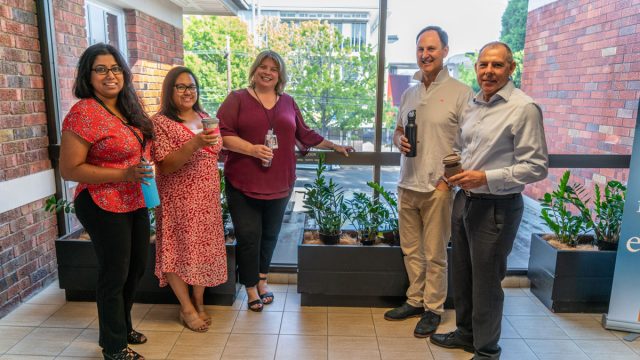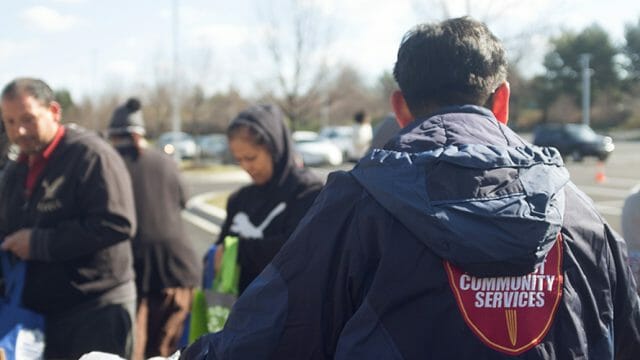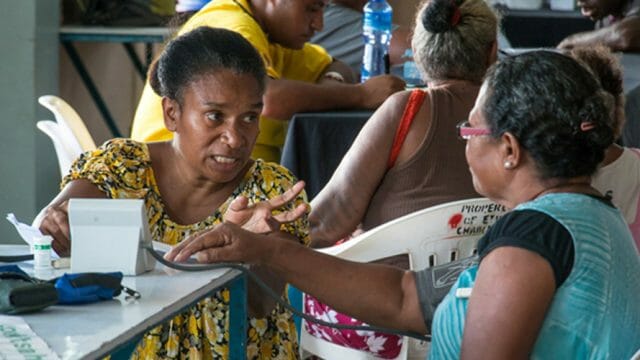An expert shares how to offer comfort during a potential crisis.

As of April 13, 2020, more than half a million Americans are infected with COVID-19, making the United States the most impacted nation in the world, according to the Centers for Disease Control and Prevention (CDC).
With no clear projection of when this disease will slow down, many are wondering what the short- and long-term future holds.
Medical professionals are urging people to shift their focus to an important issue: making their health-care wishes known in advance. A common occurrence with sudden hospitalizations or end-of-life care is that individuals do not have a plan they would like medical professionals or their loved ones to follow. This plan is also known as an advance directive for health care. Only 37 percent of people living in the United States have an advance directive. Among younger adults, only 29 percent have them, according to a study published by Health Affairs.
Gina Mohr, a palliative medicine specialist at Loma Linda University Health, says not having a directive is one of the biggest mistakes a patient can make. She says in ordinary times few people have discussed what their wishes would be if they became seriously ill. When they can no longer communicate, families are often left guessing what their loved one would want.
“The pandemic presents new challenges for individuals, families, health professionals, and health systems,” Mohr says. “We are seeing patients get suddenly ill — sick enough to require being in the hospital and perhaps on a breathing machine. This is when it is more important than ever to think and talk about the care you want before any such hospital care may happen.”
Mohr says medical professionals will always err on the side of saving a life if there is not an advance directive. To ensure you have control in your decision-making, Mohr provides a quick guide to help the community navigate these uncertain times during the COVID-19 crisis and help people feel empowered to make decisions concerning their health. She gives these tips for those within the following categories.
High-risk Groups Currently Receiving Care
During this time, Mohr assures patients they will still receive the best treatment possible if they are currently undergoing treatments such as chemotherapy for cancer. It is still important to have a plan during these times, since at-risk groups have a higher probability of contracting the coronavirus. If, during your care, you contract COVID-19, treatment for other conditions will not resume until you have recovered from the disease.
Healthy Individuals Who Need to Go to the Hospital
A group of otherwise healthy individuals will get acutely ill and present to the hospital to have medical professionals do all they can to potentially save their life. In this event, Mohr wants individuals to remember they cannot have loved ones present in the hospital with them at this time, so having a directive in place is important. In addition, a medical professional may not have much time to call a family member for you or video chat with them. Be prepared and provide a plan when you go to the hospital.
At-risk Groups that Would Like to Handle End-of-life Care at Home
Among those infected, there have been more than 22,000 deaths, most of which are from the following high-risk groups: the elderly, and those with immunocompromised systems and underlying health conditions such as diabetes, heart disease, or even asthma, to name a few. With loved ones and individuals who are aware of this statistic, they may be hesitant to go to the hospital or send their loved one if they are in this group. If you prefer to keep your loved one home, Mohr suggests reaching out to your physician, who will guide you through completing a Physician Order for Life-Sustaining Treatment (POLST) form that will allow you to communicate your wishes to first responders or others on the health-care team.
The original version of this story was posted on the Loma Linda University Health news site.








